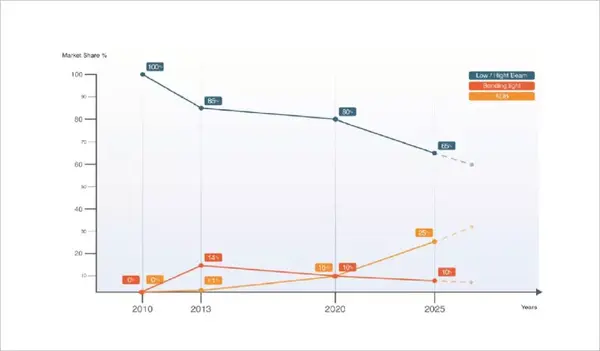News Center
NEWS CENTERNews Center
Location Position:Home > News CenterIntelligent lighting control technology
The concept of changing the light type according to different road conditions was first put forward in 1958, but it was technically difficult to realize in the age when halogen lamps were the main light source of headlights.
With the continuous progress of automotive lamp technology, due to the popularity of LED light source and a large number of technological innovations in the field of sensor and algorithm processing, the current more advanced headlight system has realized the function of diversified light type adjustment according to various complex road environment, and implemented various functions such as multi road mode switching, intelligent follow up steering, automatic recognition of glare free driving beam of oncoming vehicles, road sign recognition Pedestrian warning and other intelligent lighting actions.
Such functions are not only helpful for driving safety, but also can intuitively improve the sense of technology of the vehicle. They are more consistent with the current trend of assisted driving/automatic driving technology, and have broad market prospects.
 图一 Market share trend assessment of ADB (Adaptive Driving Beam)
图一 Market share trend assessment of ADB (Adaptive Driving Beam)No matter what kind of intelligent lighting action is achieved, the core of its light source technology is to divide the high and low beam types into a number of different areas, and switch or adjust the brightness of each area according to the data input of the camera or sensor and the preset algorithm.
The more areas you divide, the more light patterns you can combine, and the more complex intelligent lighting actions you can achieve. With the gradual increase of the divided areas and the continuous reduction of the area of a single area, the industry has begun to use the concept of "pixel" in display technology to refer to such areas.
This paper will analyze several major light source technology routes to achieve such a multi pixel intelligent headlight. Due to space limitations, this paper only gives a general description of each technology, and analyzes its core advantages and major bottlenecks.







